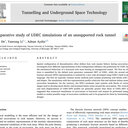Identification of a 62-kDa major allergen from Artemisia pollen as a putative galactose oxidase.
Schlüsselwörter
Abstrakt
BACKGROUND
Around 20 years ago, a 60- to 70-kDa protein was reported as a major allergen of mugwort (Artemisia vulgaris) pollen. This study was to identify and characterize its molecular properties.
METHODS
Sera from 113 Chinese and 20 Dutch Artemisia-allergic/sensitized subjects (and pools thereof) were used to identify the 60- to 70-kDa allergen. Pollen extracts of seven Artemisia species were compared by immunoblotting. Transcriptomics and proteomics (mass spectrometry) of A. annua pollen were used to identify the putative 60- to 70-kDa Artemisia allergen. Both the natural purified and recombinant allergens were evaluated for IgE reactivity by ImmunoCAP. Fourteen Chinese Artemisia-allergic patients were tested intradermally with purified natural allergen.
RESULTS
Immunoblots revealed two major bands at 12 and 25 kDa, and a weak band at 70 kDa for all seven Artemisia species. Using a combined transcriptomic and proteomic approach, the high molecular mass allergen in A. annua pollen was shown to be a 62-kDa putative galactose oxidase, with a putative N-glycosylation site. More than 94% of Artemisia pollen-allergic patients had IgE response to this allergen. Although recognition of a nonglycosylated recombinant version was only confirmed in a minority (16%) and at much lower IgE levels, this discrepancy cannot be explained simply by reactivity to the carbohydrate moiety on the natural allergen. Intradermal testing with the natural allergen was positive in five of nine sensitized patients.
CONCLUSIONS
The previously reported 60- to 70-kDa allergen of Artemisia pollen is most likely a 62-kDa putative galactose oxidase here designated Art an 7.




